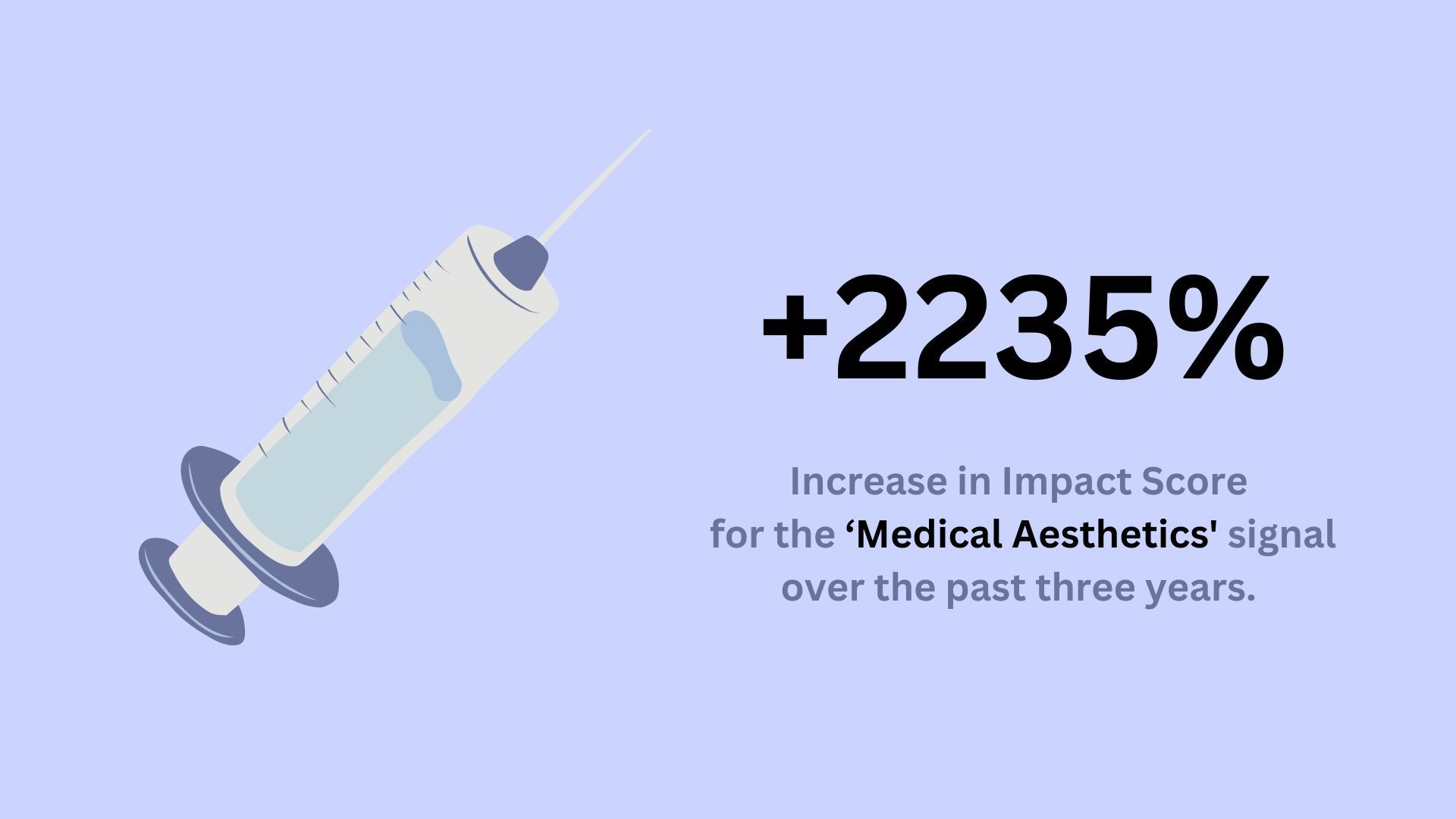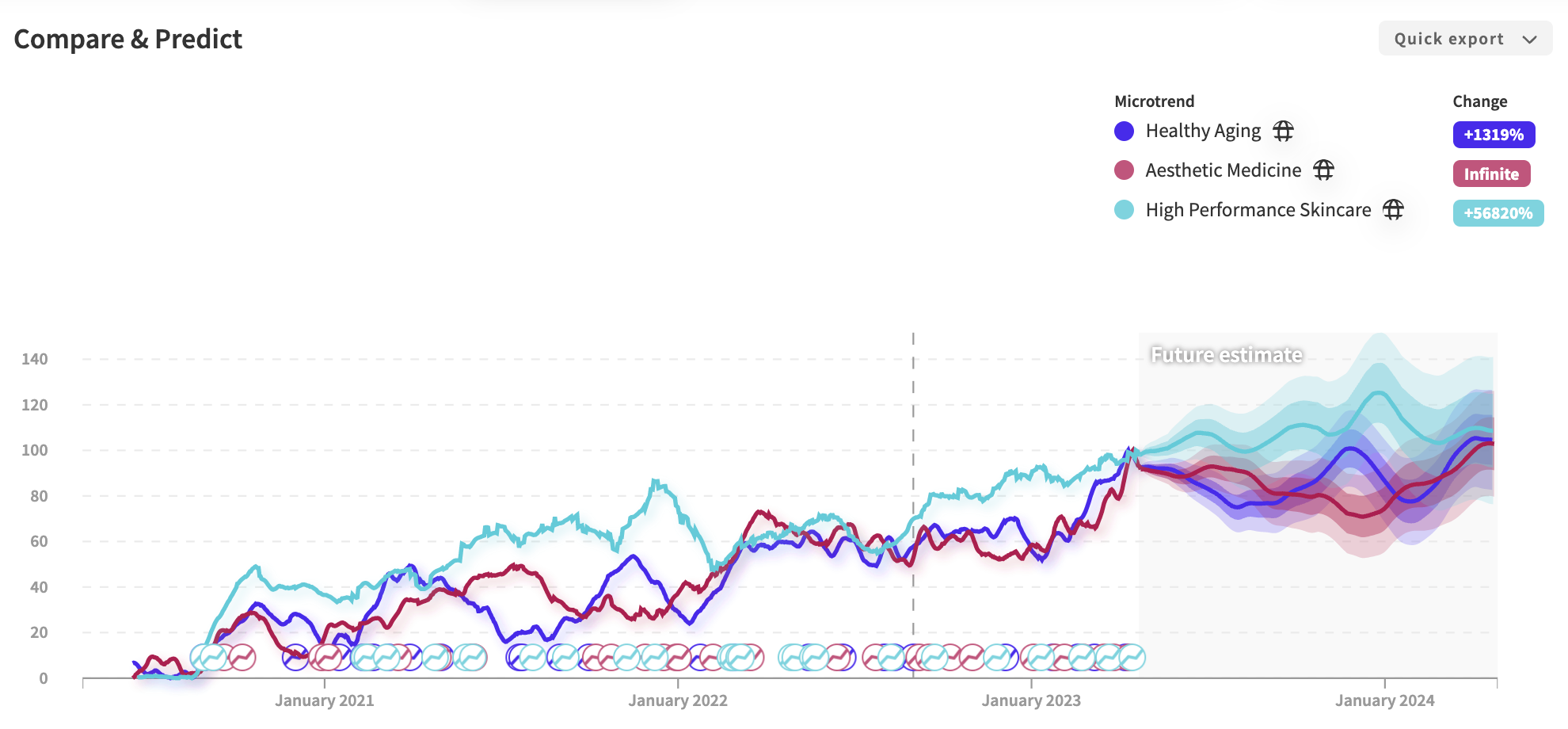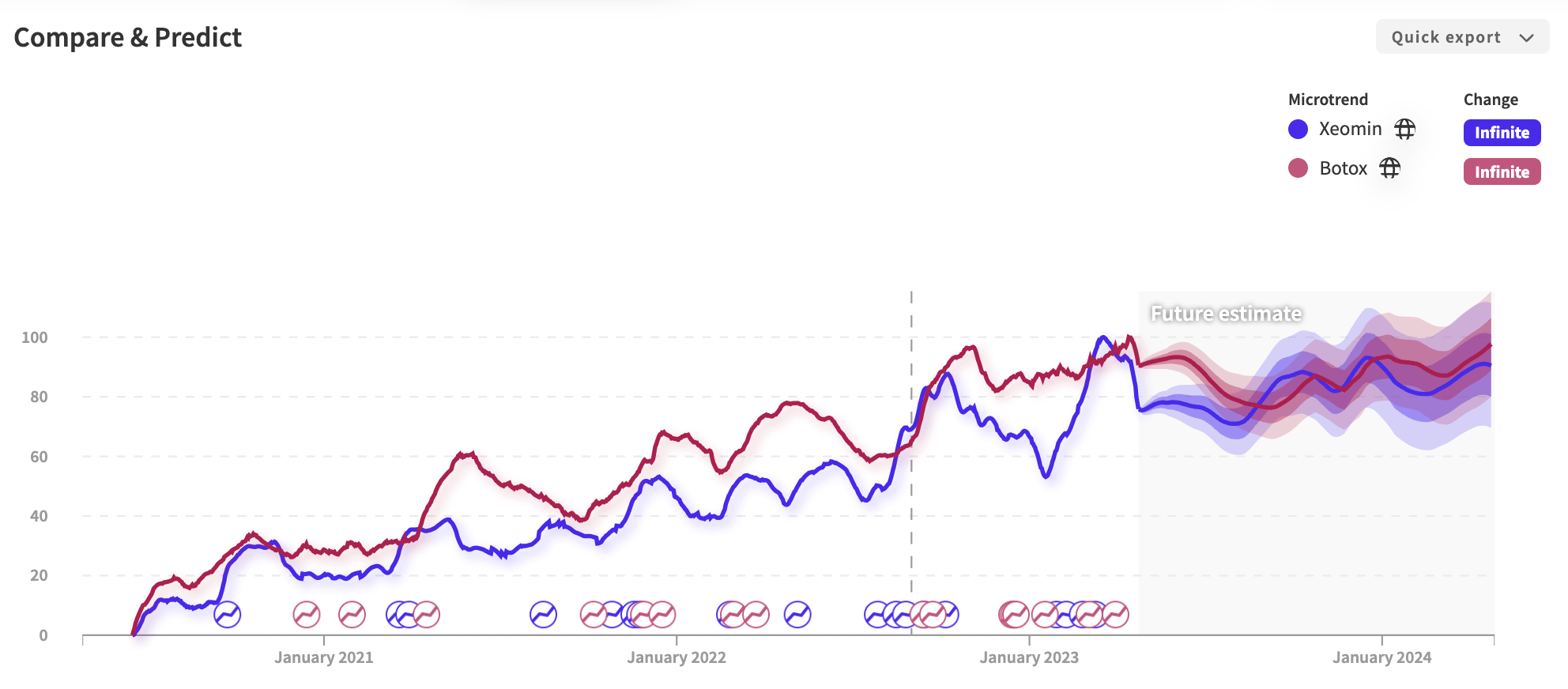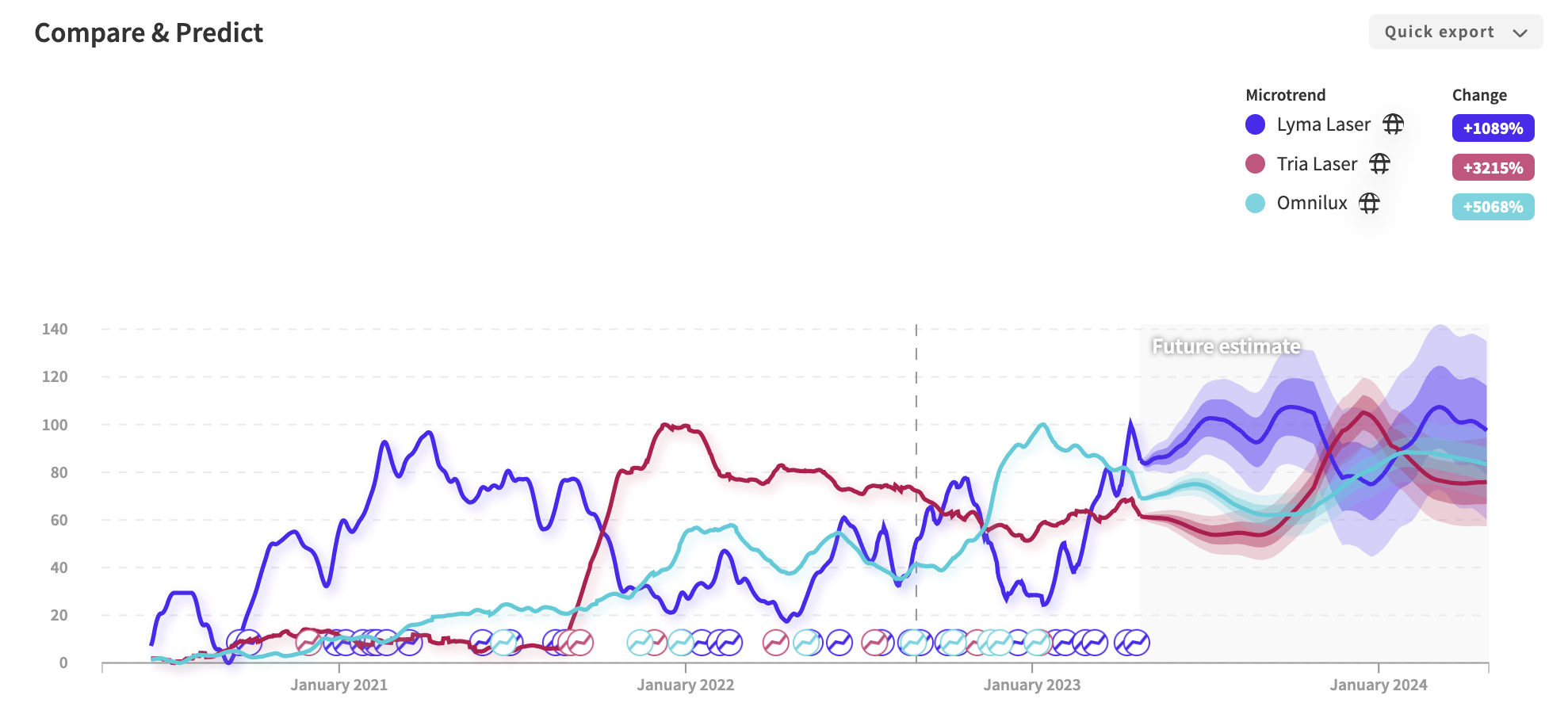Hello Forecasters,
Welcome back to the Inflection Point. The newsletter tracking 100 million consumer signals to predict cultural shifts relevant to you.
This week we’re covering ‘Medical Aesthetics.’
TLDR;
- ‘Medical Aesthetics' refers to minimally invasive treatments that improve cosmetic appearance — hello, Botox!
- Gen Z leads the 'Prejuvination' movement, while Boomers are 'Healthy Aging'.
- At-home beauty devices are on the rise.
- Companies bridging the gap between medical-grade technology and consumer products stand to gain.

What’s behind the ‘Medical Aesthetics’ trend?
Appearance, of course.
And while aging may be a fact of life, looking your age is not.
Popularity for medical aesthetics comes from both ends of the age spectrum. Baby Boomers seeking to look more youthful, and Gen Z / Millenials buying into the 'pre-juvination' movement. A philosophy focused on preventative work to delay wrinkles before they appear.
For Gen Z, 'tweakments' (procedures to 'tweak' appearance) are a form of self-care, says board-certified dermatologist Dr Joyce Park. "Frozen foreheads are a hard pass. And "anti-aging" is not in their vocab".
The shift away from negative language used to describe aging means that 'anti-aging' is being replaced with a 'healthy aging' mindset.
‘Healthy Aging’ and the procedures to support it are increasing in consumer interest.

The 'anti-aging' industry is expected to reach $93B by 2027.
Technological advancements, medical spa accessibility, and greater acceptance have created a mass market.
But the greatest influence of all? Social media and the selfie cam.
• 64% of Gen Z use filters on their photos.
• Zoom meetings have forced us to stare at our reflections non-stop.
• Celebrities continue to promote their fave procedures (did you know Gwyneth Paltrow is an ambassador for the 'clean' injectable Xeomin?).
The interest in injectables, particularly Botox and its preservative-free cousin Xeomin, has steadily increased.

So, what is 'Medical Aesthetics'?
'Medical Aesthetics' encompasses many procedures to enhance physical appearance. The most common include:
- botox
- dermal fillers
- micro-needling
- micro-currents
- red light therapy
- body contouring (fat freezing)
- laser treatments (hair removal, scarring, dark spots, varicose veins)
These procedures run the spectrum of $300 -$3000 per session.
Who stands to gain from the growing field of ‘Medical Aesthetics’?
Cosmetic innovation has always had its roots in the medical field.
- Microcurrent devices and Botox were first used in the 1980s to stimulate muscles in people with conditions like Bell's Palsy.
- LED Red Light Therapy was initially developed by NASA to heal space wounds.
- The top-selling skincare brand, Augustinus Bader, first intended its creams to treat burns.
Companies bridging the gap between medical-grade technology and consumer products stand to gain.
What was once in a NASA research lab has made its way into the consumer household. At-Home Beauty Devices include cutting-edge laser technologies that offer consumers medical-grade results in the comfort of their homes.
The below signal shows that ‘At-home Beauty Devices’ forecast significant consumer interest growth within the following year.

Popular new at-home devices include:
• The Lyma laser. The world’s only clinic-grade cosmetic laser FDA-cleared for at-home use. (100X more potent than LED)
• The Omnilux face mask. A medical-grade LED red light therapy mask proven to enhance natural skin.
• The Tria hair removal device. A dermatologist-level FDA-cleared laser hair removal device.

The Takeaway?
Procedures that ’tweak’ one’s appearance are a beauty norm. The 'medical aesthetics' field will continue to grow. And the most competitive companies will be those offerings medical-grade results in the comfort of the consumer's home.
That's all we got for now.
Thanks for spending time with us on this week's Inflection Point.
Found this interesting? Subscribe below or send us a note. We'd love to hear from you!